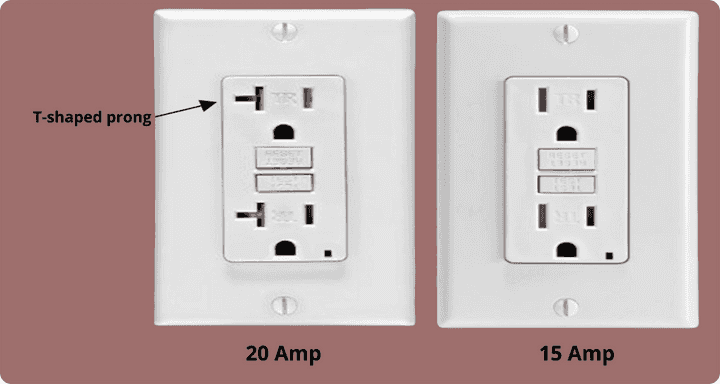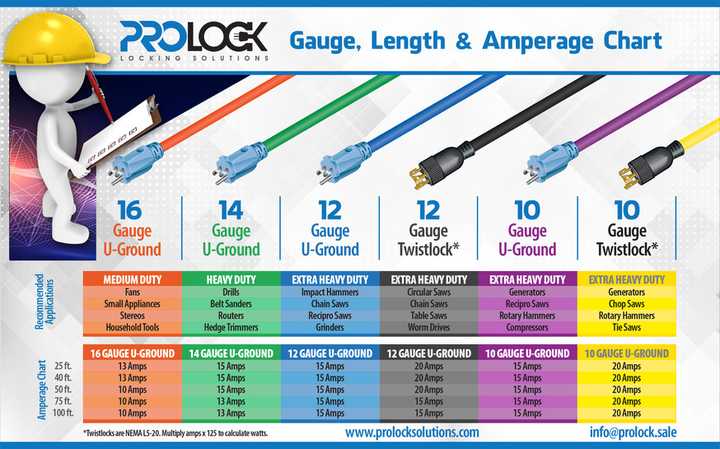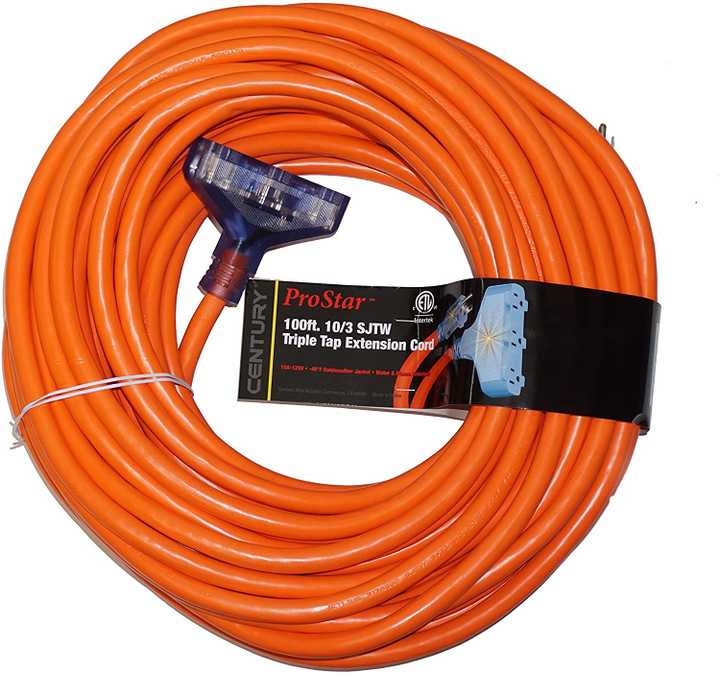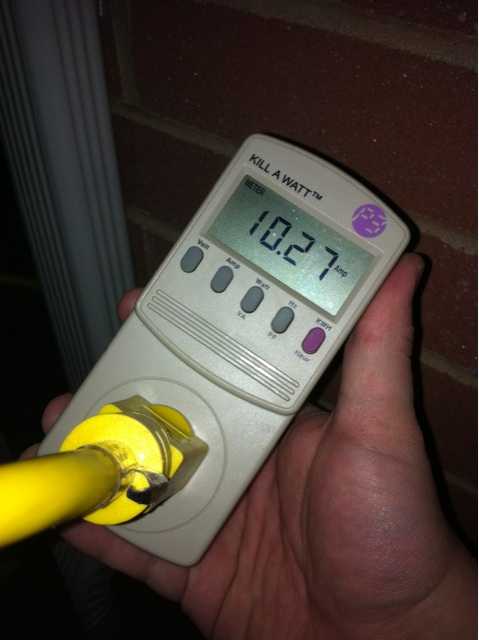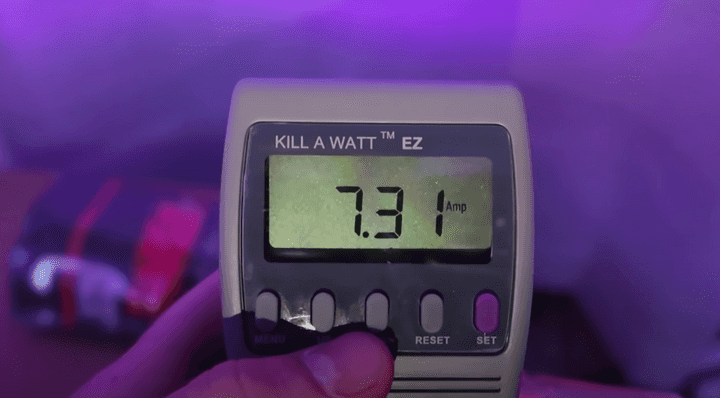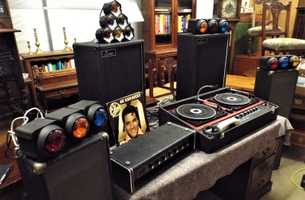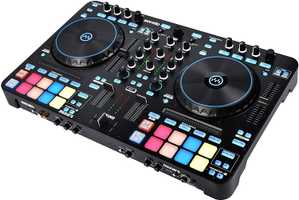How much power do you need for your DJ equipment?
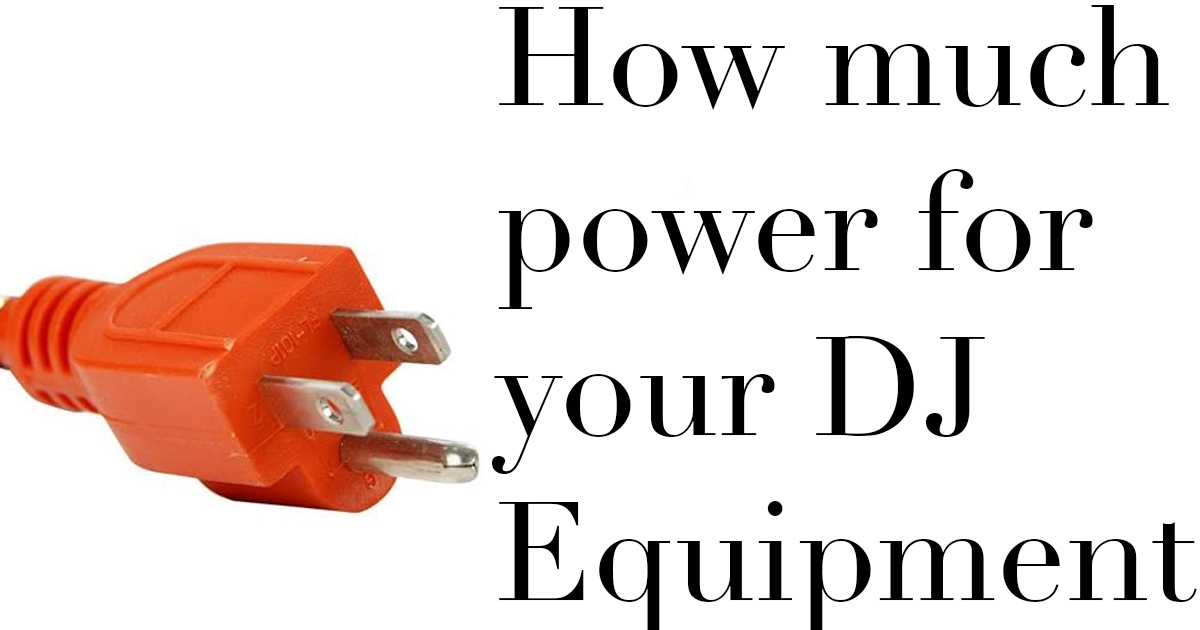
Amps and type of cables you need for DJ equipment
And this is probably one of the most underrated things that DJs and mobile DJs in particular and beginners overlook.
Specifically, I’m only gonna be talking about 110-volt outlets. I’m not gonna mess with any 220 power or free phases or stuff you get into massive concerts.
I’m gonna keep this more on the mobile DJ side to small-scale production stuff where you’re only using 110 outlets.
How much power do you need for DJ equipment?
Mostly depends on your DJ setup and types of equipment, but normally in a DJ setup, you will need a minimum of 1200 Watts and a little over 10 amps of power.
How many watts does a DJ system use?
A DJ system uses about 1200-2000 watts in stereo mode or about 2000-5000 watts in mono mode.
My personal DJ setup barely draws 9.5 Amps (1100W). Everything was cranked up loud.
- 2x Moving headlights
- 2x "1000W" Speakers
- 1x "1300W" Subwoofer
- Light bar
- Controller
- Laptop
- Wireless mic
- Mixer
Well, you use extension cords that’s how you get power from the wall to the equipment you use extension cords. Specifically what you’re plugging into is normally either a 15 amp or a 20 amp breaker.
You can think about this as the total amount of power that that outlet can provide. So obviously the 20 amp is gonna have more power than a 15 amp.
There’s actually an easy way that you can tell if the outlet is a 20 amp or a 15 amp.
So what you’re looking for is if the outlet has a notch beside the left plug. That notch indicates that this is a 20-amp circuit. By code and by regulation an outlet that has that notch has to be at least a 20 amp circuit.
A standard outlet that doesn’t have a notch necessarily is not a 15 amp it could be a 20 amp as well. It’s just with that notch being there it is guaranteed that is a 20-amp circuit.
Kill A Watt
Obviously, all of our DJ gear draws different amounts of power.
I’m gonna be demonstrating that actually by using this device right here which is a Kill A Watt meter.
I’m gonna tell you guys right now though in terms of the things that draw the most amount of power and your deejay rig your subwoofers are gonna be the number one power draw per unit.
Recommended extension cords
So per piece of equipment, the subwoofers are gonna draw the most amount of power overall on your system if you’re using subwoofers.
Then followed by that is gonna be your bigger lighting. So like big LED spot movers those are gonna be drawing a lot of power as well.
All cables are not made the same and that is also true for extension cords. Thankfully though there are standards for extension cords and that standard gauge.
The different gauges of extension cords correlate with the number of amps that that extension cord can handle and that’s also related to how long that extension cord is.
So to best explain this I’m now gonna put up a chart and let me walk you through it.
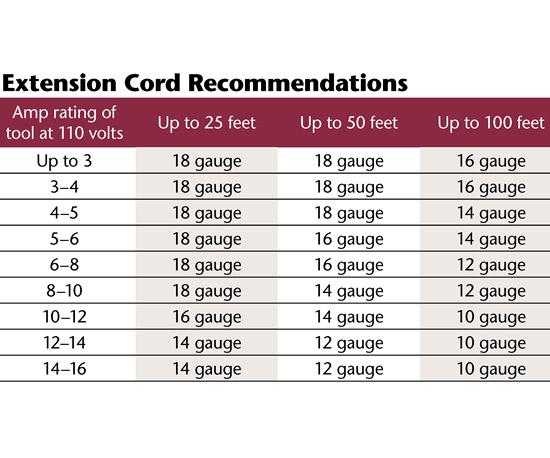
So this chart shows you different gauges of extension cords here in the middle. We got 18 gauge all the way up to 10 gauge.
On the top, we see the number of feet that the extension cords are so we have a 25-foot of 50-foot and 100-foot category. Then on the left-hand side, we see a 110-volt-ampere rating that the extension cord can handle.
When you’re looking to buy extension cords you’re gonna want to make sure that you get an extension cord that can handle at least a 15 amp load.
Not that you’re gonna overload that cable with 15 amps of power but you want that fresh hold gap so that if you do put 15 amps on it or close to it you have breathing room.
What extension cord do you need for your DJ equipment?
So in the 14 to 16 amp category at 25 feet, you need at least a 14 gauge extension cord to handle that load. If you move up to a 50-footer you need at least a 12 gauge to handle that load.
Then if you move all the way up to a 100-footer you need at least 10 gauge to handle that load. It is not listed on the chart for 20 amps but I’ll let you guys know if you want to pull 20 amps of power over your extension cord:
- A 25-footer needs at least a 12-gauge extension cord.
- A 50-footer needs to be a 10-gauge extension cord.
- A 100 feet you need to have an 8 gauge extension cord to pull a total of 20 amps.
So what I’m getting at here is that you really need to look at the gauge of the extension cord that you are using.
My recommendation and it’s what I’ve purchased is all 12 gauge extension cords, with the exception of my 100-foot extension cords being 10 gauge.
Buy black extension cords
While we’re on the topic of DJ cables I recommend you buy black extension cords.
It is probably the number one pet peeve of the pro DJ community is seeing orange-yellow extension cords out there on your DJ setups. Just don’t do it with 12-gauge black extension cords.
I personally make an exception for yellow and orange extension cords and that is for running very long distances, especially in outdoor scenarios.
If I’m running power from a very far distance away and that extension cord is going across walkways people might trip over it, my point is an extension cord that’s out in the open away from my setup is a hazard.
I want it to be as visible as possible. So having it in yellow or orange out there and open wherever it is running I personally think is a safety concern and should be yellow or orange that’s my personal opinion. I’d rather use a yellow or orange wind in that scenario.
For all the extension cords that are around my setup and the ones going off my t-bars or my tripods, I want to make sure they’re all black that way they blend in, look clean and they look professional.
Power is very important especially when you get into doing bigger setups. This whole setup right here I managed to squeeze on two-three individual 15 amp breakers.
This is a Prostar, they’re probably one of the more affordable 12 gauge extension cords out there. I like them because the ends light up if there’s electricity it makes problem-solving a lot easier on these big rigs.
So this is actually the first gig I’ve actually brought this device out to I actually had no clue how much power all this draws. I’ve already gone through and measured everything that way I can make sure everything doesn’t blow a circuit basically.
What draws the most power in a DJ setup?
Let’s go ahead and let’s measure how many amps / Watts this DJ setup is pulling.
Preferably we’re going to want to look at our more heavy power draw things. For you guys that are unfamiliar with what draws the most power in a setup like this:
Lighting those big movers gonna be drawing a lot of power and our subwoofer. Subwoofers are normally the ones that draw the most power per individual like unit they’re the biggest draw. In this set right here let’s go observe how many amps some of the stuff is pulling.
My DJ setup is one of the 15 amp circuits that comes into the setup. This is a yellow 10 gauge extension cord 100 feet long that’s bringing power from one of the circuits that are pretty far away.
You can see the power on, this lights up so I know that this has power coming from the outlet. Quickly just wanted to explain why my hundred-foot 10 gauge in yellow:
I got pretty cheap at harbor freight. I got it 20% off. And I love the fact that the ends light up. It’s yellow because that was the only color they had.
The 12 gauge 25-foot extension cord that comes off runs up to this massive truss rig and I want to know how much power that whole entire truss rig is drawing. For reference we have:
- 2x ADJ Mega Tri Par plus
- 4x ADJ Inno Spot Pro
- 2x Chauvet Wash FX 2
So we’re going to plug in our kill a watt into this power outlet and we’re gonna plug the lighting extension cord into the front of this and we’re going to measure how many amps watts we have.
I measure amps because that’s what I care about this is a 15 amp circuit I don’t want to blow the 15 amp circuit. So let’s determine how much it draws.
Right now you’re looking at the volts that are coming out of this outlet. We have 114 volts that’s pretty good seeing as how we’re traveling over 100 feet. We can click or up and down and go to different objects in different modes.
So the whole entire day right now is pulling 590 watts. That is under what we’re going to actually be pulling because the lights are not at their full power draw.
We’re pulling about 7 amps and yes all that lighting is pulling seven amps of power that’s a pretty substantial amount.
It’s also why you need to make sure you’re using high-quality extension cords because 7 amps over say an 18 gauge extension cord that extension cord is gonna get pretty hot.
Take all of your fixtures and literally at the home plug, turn them on to the maximum brightness, plug it straight into the kill-a-watt and then basically make yourself a chart.
This is something you need to do, make yourself a chart of how much power draw each individual fixture has. That way you can add up add subtract from different circuits to make sure that you don’t overblow that circuit.
So now that everything is on its maximum thing we’re drawing 756 Watts and we go up the amps we’re drawing a little over 9 amps of power.
LED lights pull a lot of power
All of you guys that are literally blown away that this many light is pulling 9 amps of power and these are all LED. LED lights do pull a lot of power don’t believe the hype.
LED bulbs that you like to put in your house and that yes those are more efficient and they draw less power there but they’re just a little light. These are big DJ lights that are designed to light up a whole entire room they pull a lot of power.
How much power do your subwoofers draw?
A way to do this is you plug in the kill-a-watt and then you literally turn your subwoofer all the way up to its hitting a limit and then you know how much power draws.
You really want to go through and test a lot of different songs if you have a note generator generate some notes and see what the maximum power is that these subwoofers pull on.
Dj subwoofer power consumption (AMP)
- JBL VRX 918SP - 7 AMP
- JBL PRX 715XLF - 2 AMP
But test out a lot of different songs that you can see the fluctuation and aunt flow. Because literally when you’re playing these subs with music at peak volume you’ll see it go all the way down to one amp and then shoot back up.
So on average, I was getting with the VRX Subs anywhere from 6 to 7 amps of pull.
Just because I know you guys are probably curious the whole entire lighting rig pulls about 9 amps the subs are split up into two circuits so those pull about 8 amps apiece.
High-tops high frequencies take a lot less power to produce they are running on 100 Hertz across they’re gonna be right around to the 3 amps. The haze generator produces just under 2 amps.
Key things to do at home to measure power consumption
Plan ahead
First thing you really should probably do your homework ahead of time. And that it’s something that I’ve been slacking on doing.
That is taking this kilowatt and finding time to measure the maximum amount of power draw that basically all of your equipment has.
Then take all that data and put it in a spreadsheet.
That way if you’re going out to a gig you can go through and you can plug in basically or look up everything that you’re bringing to the gig the maximum power draw that is and you can figure out how many circuits you need.
For most mobile DJ sets especially weddings you’re probably gonna be able to run on less than 10 amps of power and have no problem.
But if you’re doing say a bigger setup with totem movers TVs you really want to be cognizant of the amount of power that you are drawing.
The main reason behind that is you don’t necessarily know how much of that circuit is already being used.
Bring a second circuit
My second point is to always have at least two circuits. So if you only need 10 amps of power to run your rig or 12 amps make sure you have at least two circuits because you don’t know what else is plugged into that circuit.
Unless you go through the pre-planning and go through with the venue manager or the janitor etc to verify what is on that circuit.
I’ve definitely run into the case at high schools where I didn’t realize a fridge for the cafeteria on the other side was on the same circuit and that fridge kicked on later in the gig that it wasn’t on earlier when I was testing and there went that circuit.
But luckily I was running on different circuits so it did not kill the gig the music was still playing on one of the circuits went out.
Thankfully was just the sub so really no one noticed but it’s something you want to be cognizant of like I said to make sure you have multiple circuits in that you overload your circuits.
Make sure that the sound and mixer are on different circuits
My third point is to make sure that your sound and your mixer are on different circuits.
So that if you do lose one of your circuits you’re only losing half of your speakers you know what I’m saying there.
Because the worst thing to do is to have all your sound on one circuit and all your lighting on another circuit and you lose your sound circuit and you got pretty lighting going but no audio.
That is bad if you lose your lighting it’s not the end of the world so try to split up your circuits between like:
Having a little bit of lighting a little bit of sound on one and a little bit of lighting a little bit of sound on another one just in case one of those circuits does blow.
Know the location of the circuits
Number four make sure you know where those circuits and those receptacles are so that you can reset them if you do blow.
Gauge rule
The final point I want to make for you it’s kind of a cardinal rule. That is to never put a smaller gauge extension cord in between two bigger gauge extension cords.
So you can kind of think of this as like a pipe.
So if you have the outlet over here and you got a big pipe and you’re pushing a lot of water through the pipe and then the middle you have this little tiny section and then a big pipe on the other end you’re gonna have a lot of pressure building up on that tiny section.
The same thing happens with power. Power is basically a flow and what’s gonna happen is that thin extension cord in the middle say it’s a 14 gauge and you got a 12 gauge on your side or a 10 gauge on either side it’s going to get really hot.
Purely because it’s got a large open flow on this site and a large open flow on the other side. That is one thing you would be aware of and not do.
CONCLUSION
The main takeaway here makes sure you’re buying black extension cords for your setups.
I recommend you guys buy at least 12 gauge extension cords.
But overall power is no joke you definitely want to be aware of what you’re doing with power what you’re doing with extension cord circuits all that fun stuff.

